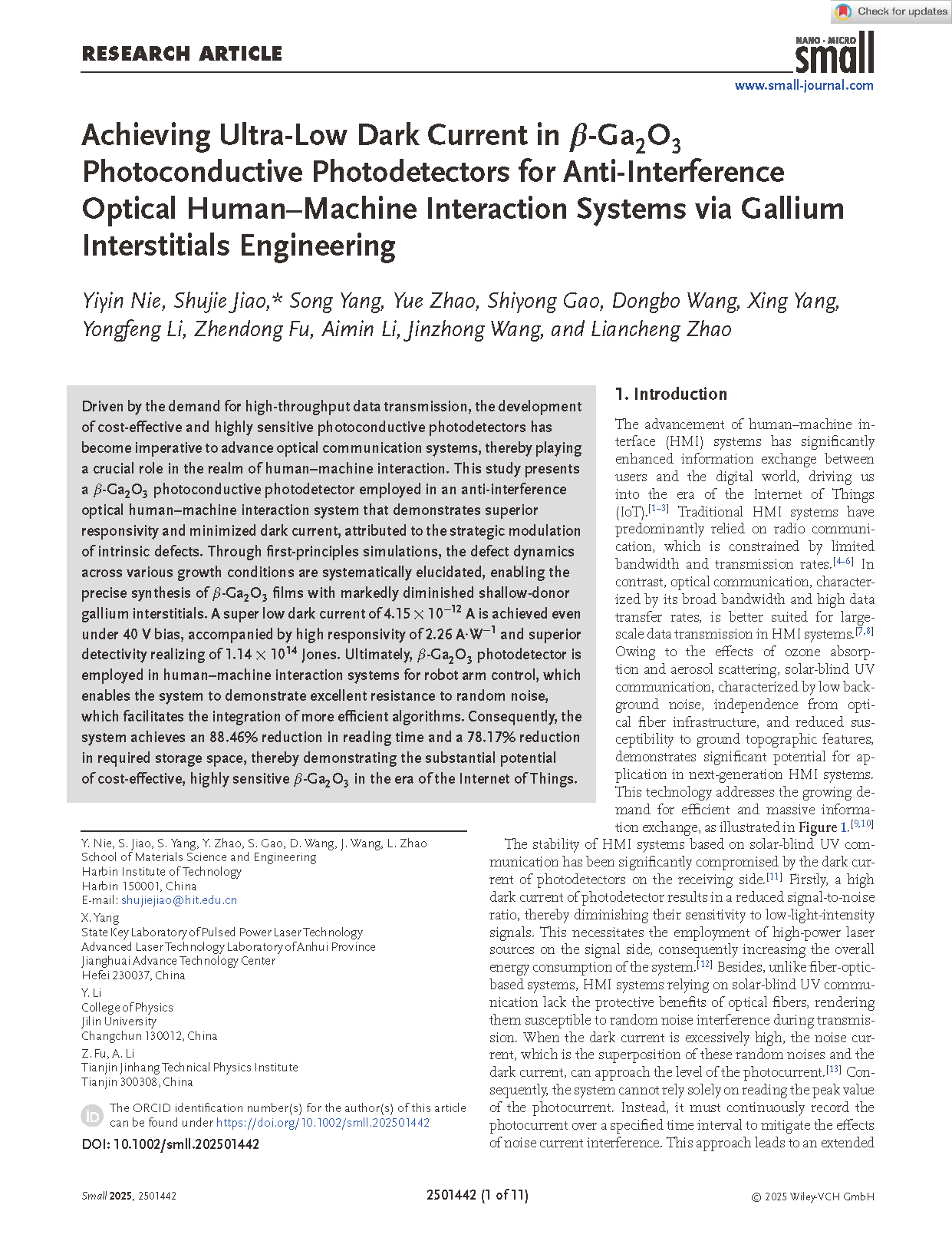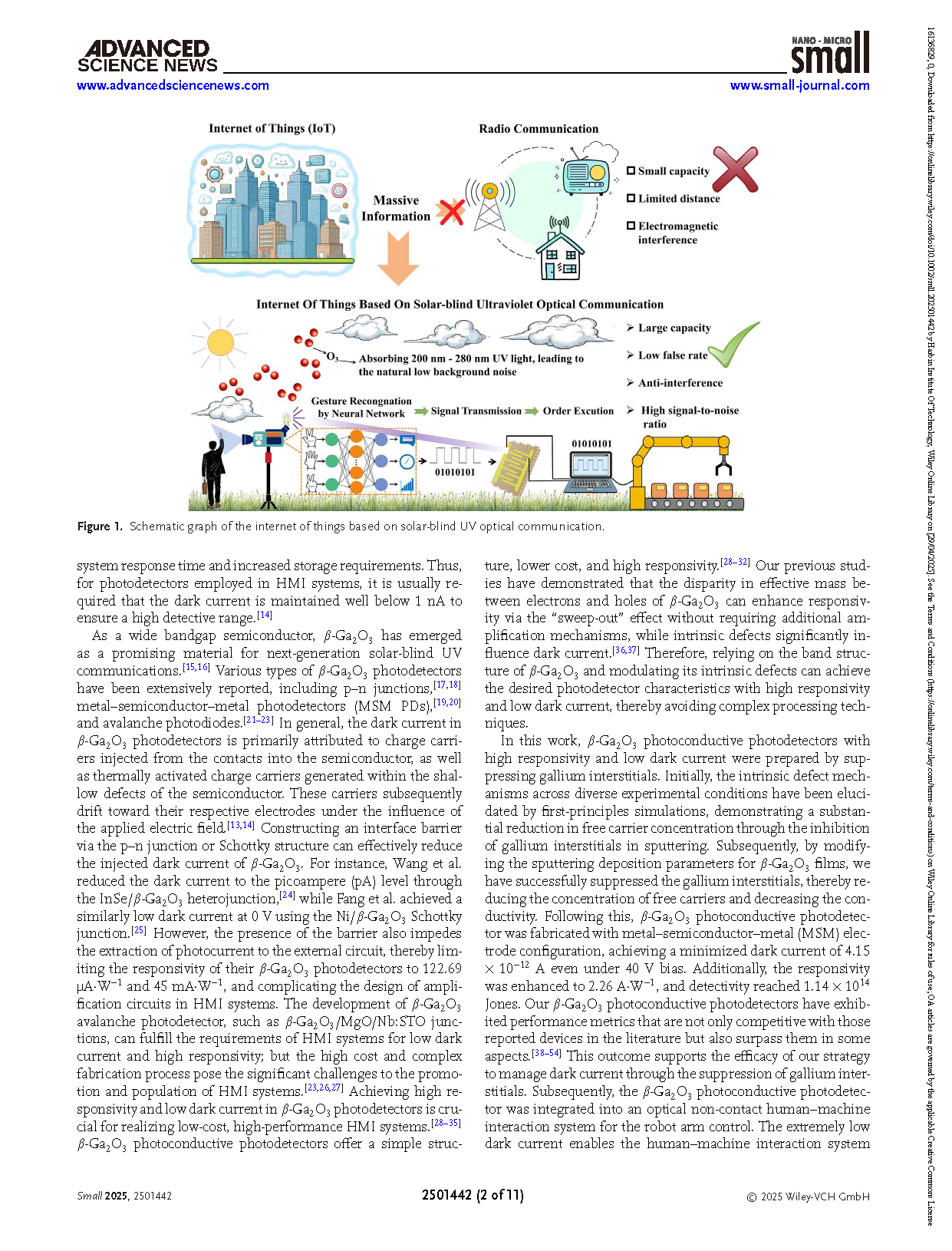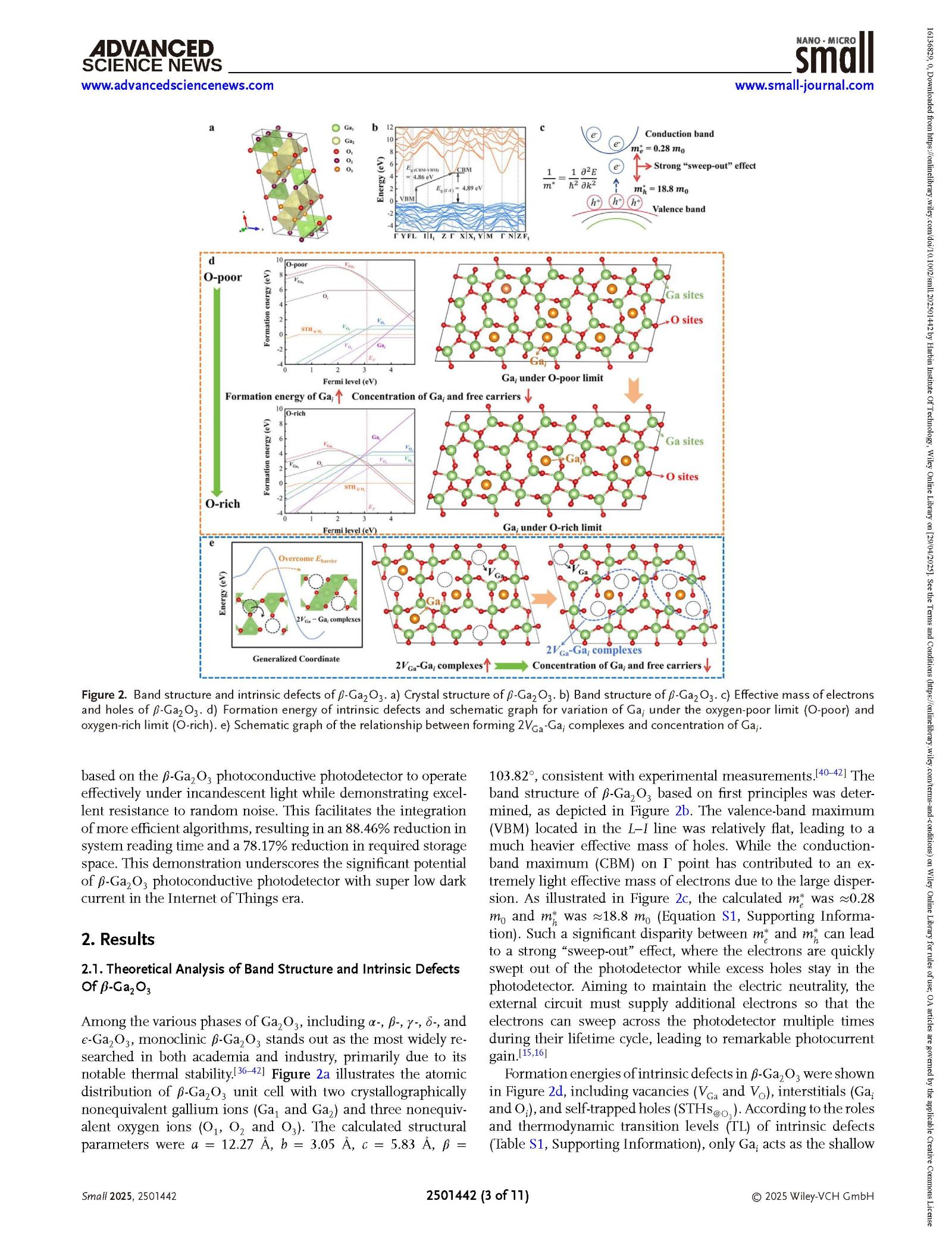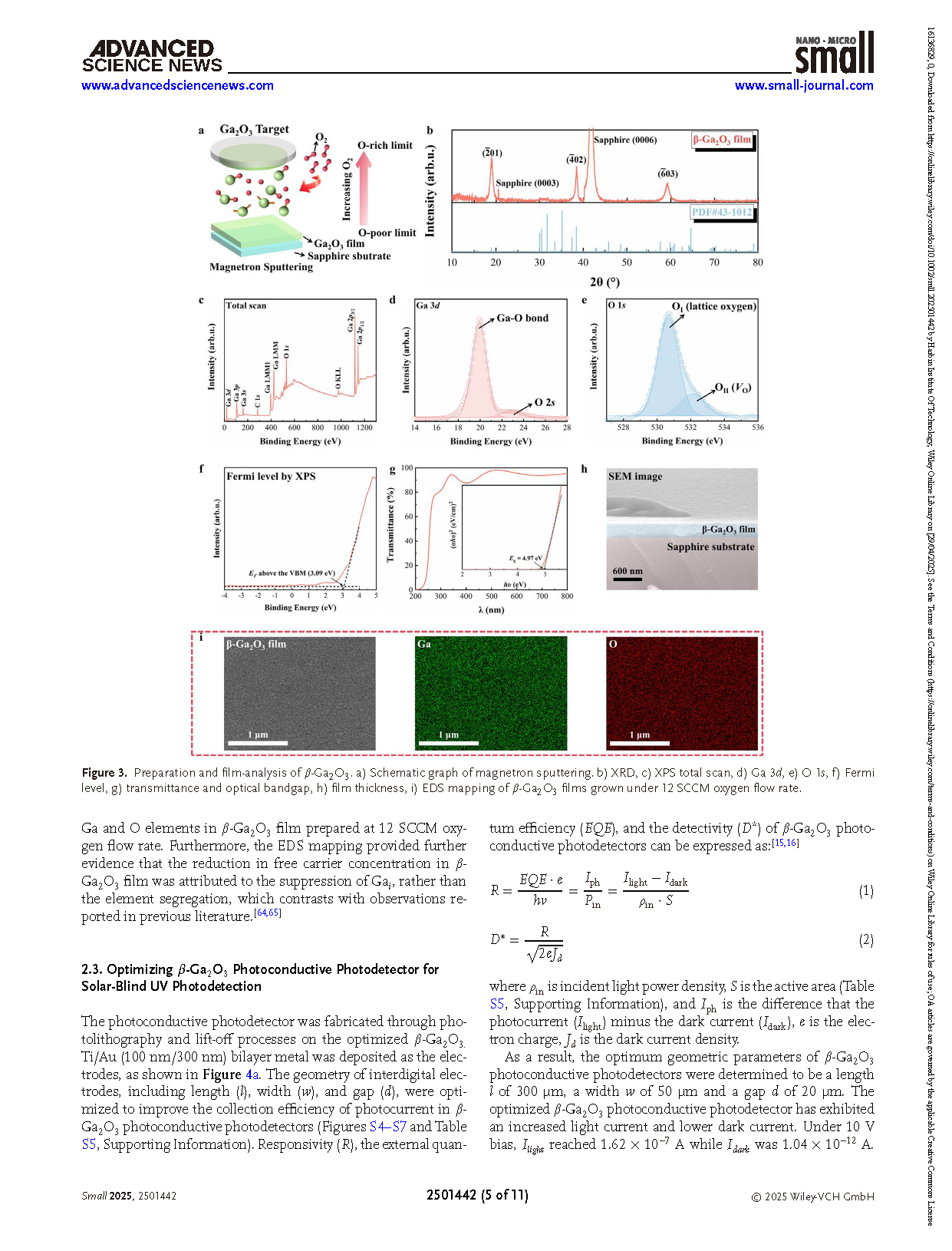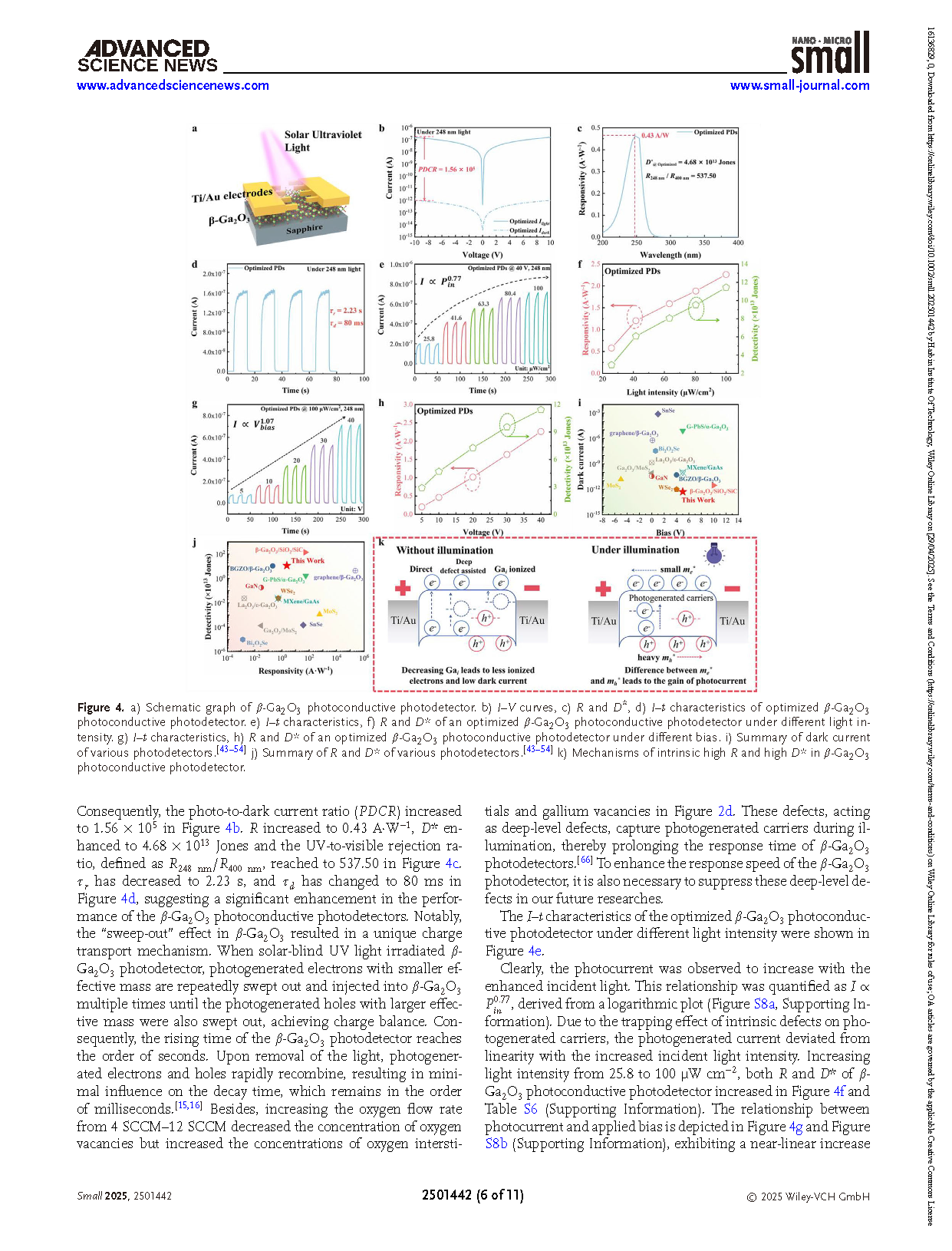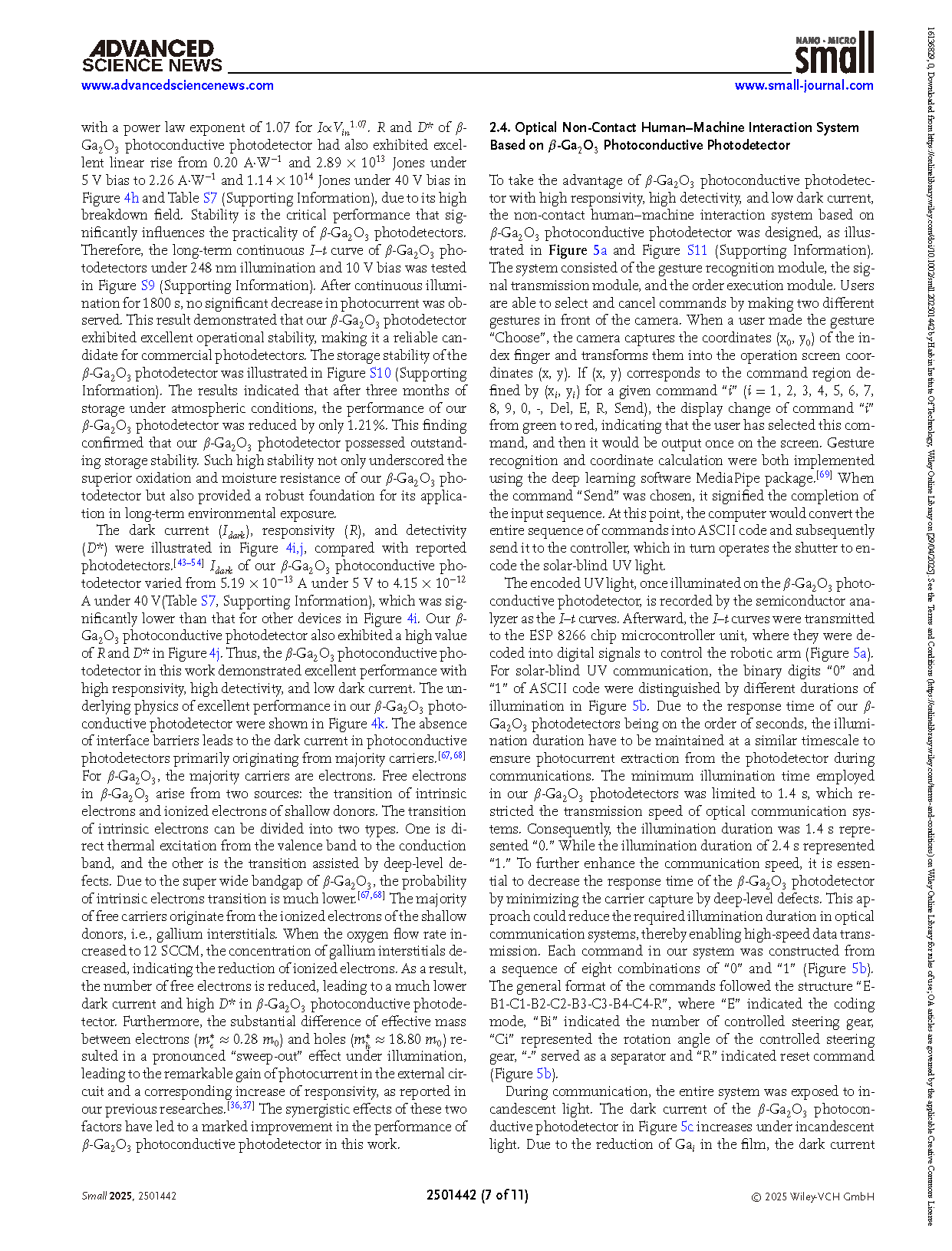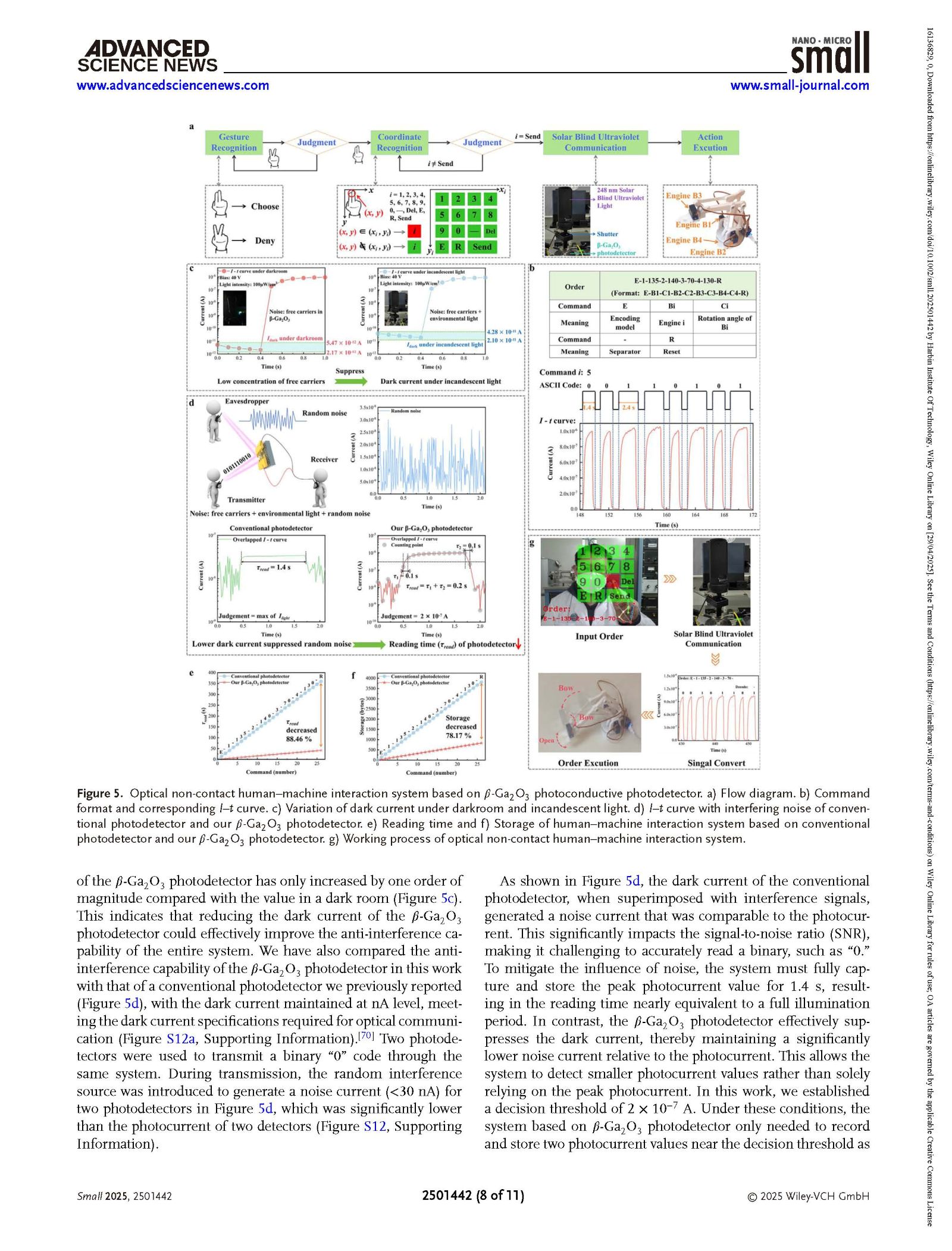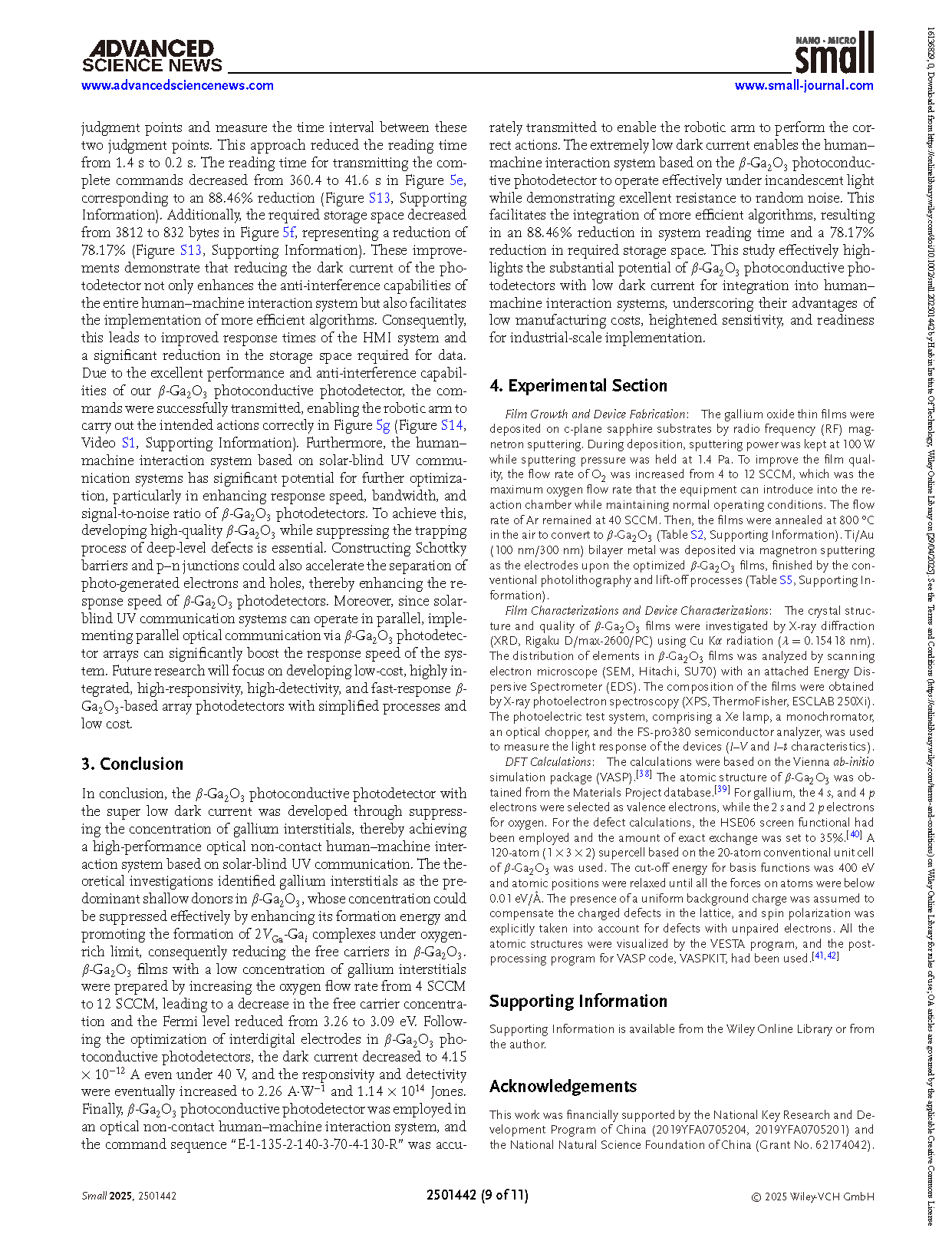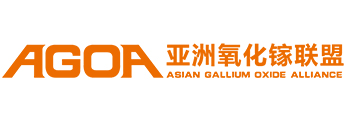

【Domestic Papers】Harbin Institute of Technology---Achieving Ultra-Low Dark Current in β-Ga₂O₃ Photoconductive Photodetectors for Anti-Interference Optical Human–Machine Interaction Systems via Gallium Interstitials Engineering
日期:2025-05-13阅读:405
Researchers from Shujie Jiao’s group of Harbin Institute of Technology have published a dissertation titled "Achieving Ultra-Low Dark Current in β-Ga2O3 Photoconductive Photodetectors for Anti-Interference Optical Human–Machine Interaction Systems via Gallium Interstitials Engineering" in Small.
Project Support
This work was financially supported by the National Key Research and Development Program of China (2019YFA0705204, 2019YFA0705201) and the National Natural Science Foundation of China (Grant No. 62174042).
Background
The advancement of human–machine interface (HMI) systems has significantly enhanced information exchange between users and the digital world, driving us into the era of the Internet of Things (IoT). Traditional HMI systems have predominantly relied on radio communication, which is constrained by limited bandwidth and transmission rates. In contrast, optical communication, characterized by its broad bandwidth and high data transfer rates, is better suited for largescale data transmission in HMI systems. Owing to the effects of ozone absorption and aerosol scattering, solar-blind UV communication, characterized by low background noise, independence from optical fiber infrastructure, and reduced susceptibility to ground topographic features, demonstrates significant potential for application in next-generation HMI systems.
Abstract
Driven by the demand for high-throughput data transmission, the development of cost-effective and highly sensitive photoconductive photodetectors has become imperative to advance optical communication systems, thereby playing a crucial role in the realm of human–machine interaction. This study presents a β-Ga2O3 photoconductive photodetector employed in an anti-interference optical human–machine interaction system that demonstrates superior responsivity and minimized dark current, attributed to the strategic modulation of intrinsic defects. Through first-principles simulations, the defect dynamics across various growth conditions are systematically elucidated, enabling the precise synthesis of β-Ga2O3 films with markedly diminished shallow-donor gallium interstitials. A super low dark current of 4.15 × 10−12 A is achieved even under 40 V bias, accompanied by high responsivity of 2.26 A·W−1 and superior detectivity realizing of 1.14 × 1014 Jones. Ultimately, β-Ga2O3 photodetector is employed in human–machine interaction systems for robot arm control, which enables the system to demonstrate excellent resistance to random noise, which facilitates the integration of more efficient algorithms. Consequently, the system achieves an 88.46% reduction in reading time and a 78.17% reduction in required storage space, thereby demonstrating the substantial potential of cost-effective, highly sensitive β-Ga2O3 in the era of the Internet of Things.
Summary
In conclusion, the β-Ga2O3 photoconductive photodetector with the super low dark current was developed through suppressing the concentration of gallium interstitials, thereby achieving a high-performance optical non-contact human–machine interaction system based on solar-blind UV communication. The theoretical investigations identified gallium interstitials as the predominant shallow donors in β-Ga2O3, whose concentration could be suppressed effectively by enhancing its formation energy and promoting the formation of 2VGa-Gai complexes under oxygenrich limit, consequently reducing the free carriers in β-Ga2O3. β-Ga2O3 films with a low concentration of gallium interstitials were prepared by increasing the oxygen flow rate from 4 SCCM to 12 SCCM, leading to a decrease in the free carrier concentration and the Fermi level reduced from 3.26 to 3.09 eV. Following the optimization of interdigital electrodes in β-Ga2O3 photoconductive photodetectors, the dark current decreased to 4.15 × 10−12 A even under 40 V, and the responsivity and detectivity were eventually increased to 2.26 A·W−1 and 1.14 × 1014 Jones. Finally, β-Ga2O3 photoconductive photodetector was employed in an optical non-contact human–machine interaction system, and the command sequence “E-1-135-2-140-3-70-4-130-R” was accurately transmitted to enable the robotic arm to perform the correct actions. The extremely low dark current enables the human– machine interaction system based on the β-Ga2O3 photoconductive photodetector to operate effectively under incandescent light while demonstrating excellent resistance to random noise. This facilitates the integration of more efficient algorithms, resulting in an 88.46% reduction in system reading time and a 78.17% reduction in required storage space. This study effectively highlights the substantial potential of β-Ga2O3 photoconductive photodetectors with low dark current for integration into human– machine interaction systems, underscoring their advantages of low manufacturing costs, heightened sensitivity, and readiness for industrial-scale implementation.

Figure 1. Schematic graph of the internet of things based on solar-blind UV optical communication.
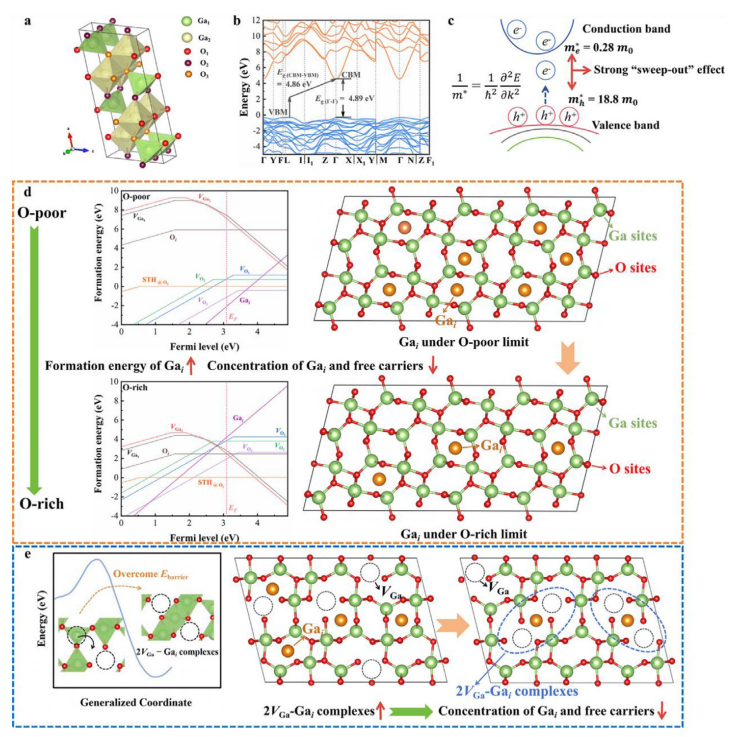
Figure 2. Band structure and intrinsic defects of β-Ga2O3. a) Crystal structure of β-Ga2O3. b) Band structure of β-Ga2O3. c) Effective mass of electrons and holes of β-Ga2O3. d) Formation energy of intrinsic defects and schematic graph for variation of Gai under the oxygen-poor limit (O-poor) and oxygen-rich limit (O-rich). e) Schematic graph of the relationship between forming 2VGa-Gai complexes and concentration of Gai.
DOI:
doi.org/10.1002/smll.202501442
